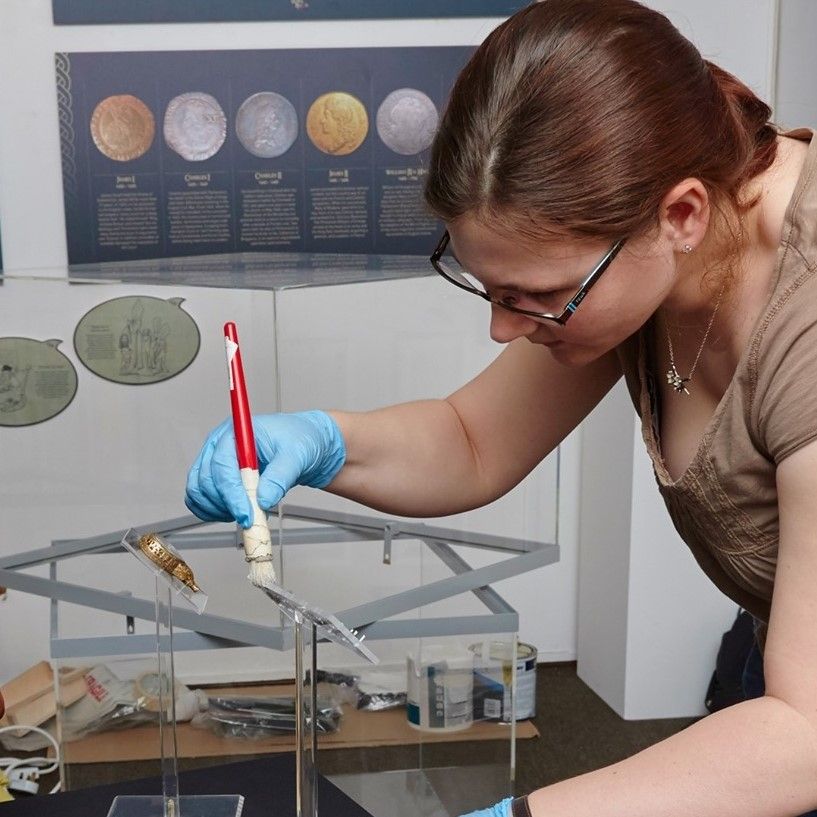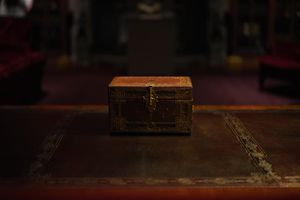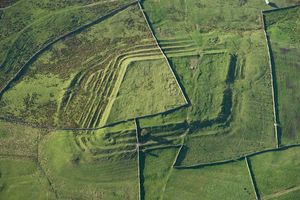With Hampshire Cultural Trust Conservator, Claire Woodhead
In August 2019, the trust was able to acquire the ‘Oakley hoard’, an assemblage consisting of a copper alloy and wood tankard, another copper alloy vessel, some iron implements and a ceramic vessel. The items were discovered in association with a Late Iron Age burial at Oakley, near Basingstoke, in January 2017. Conservation of the Oakley tankard has already been completed (an account of the work can be read in Hampshire Field Club and Archaeological Society Newsletter, No. 73, Spring 2020).
For the second instalment in this short series of posts for the Festival of Archaeology, we look at the process of micro-excavating the Oakley ceramic vessel in the conservation lab.
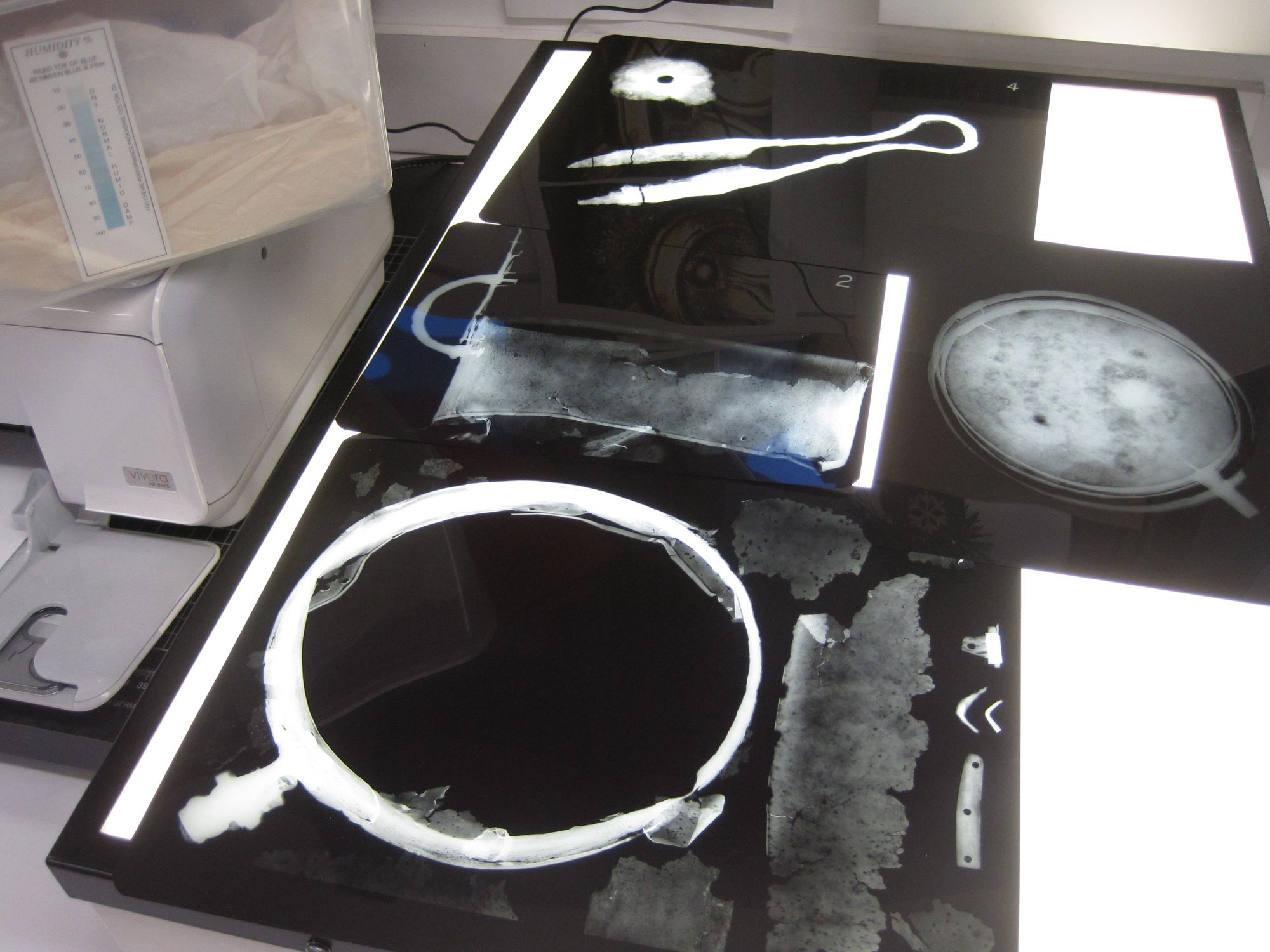
The Oakley vessel – Part 2: Micro-excavation
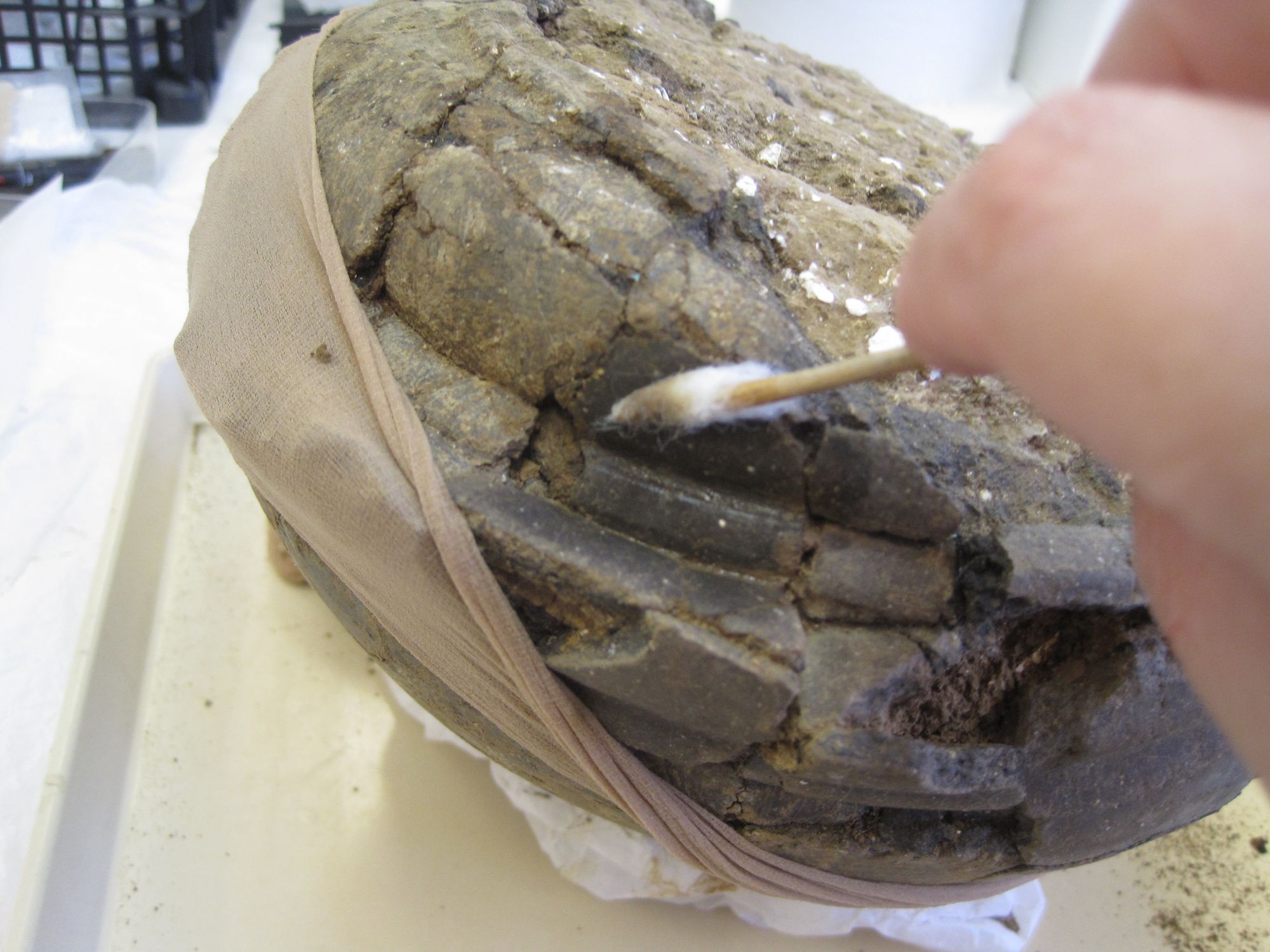

In the last instalment, the Oakley vessel was received into the lab and stabilised, after having had an x-ray which showed no obvious metallic inclusions in the soil fill. Now that the consolidant helping to bind the fragments together has cured, the nylon tights supporting the pot can be rolled away and cleaning of the external surface can begin. Last time, the bulk of the external soil was removed, to help determine where the soil ended and the pot began. Now, deionised water on lightly moistened cotton swabs is used to lift away the last of the soil residue and reveal the surface.
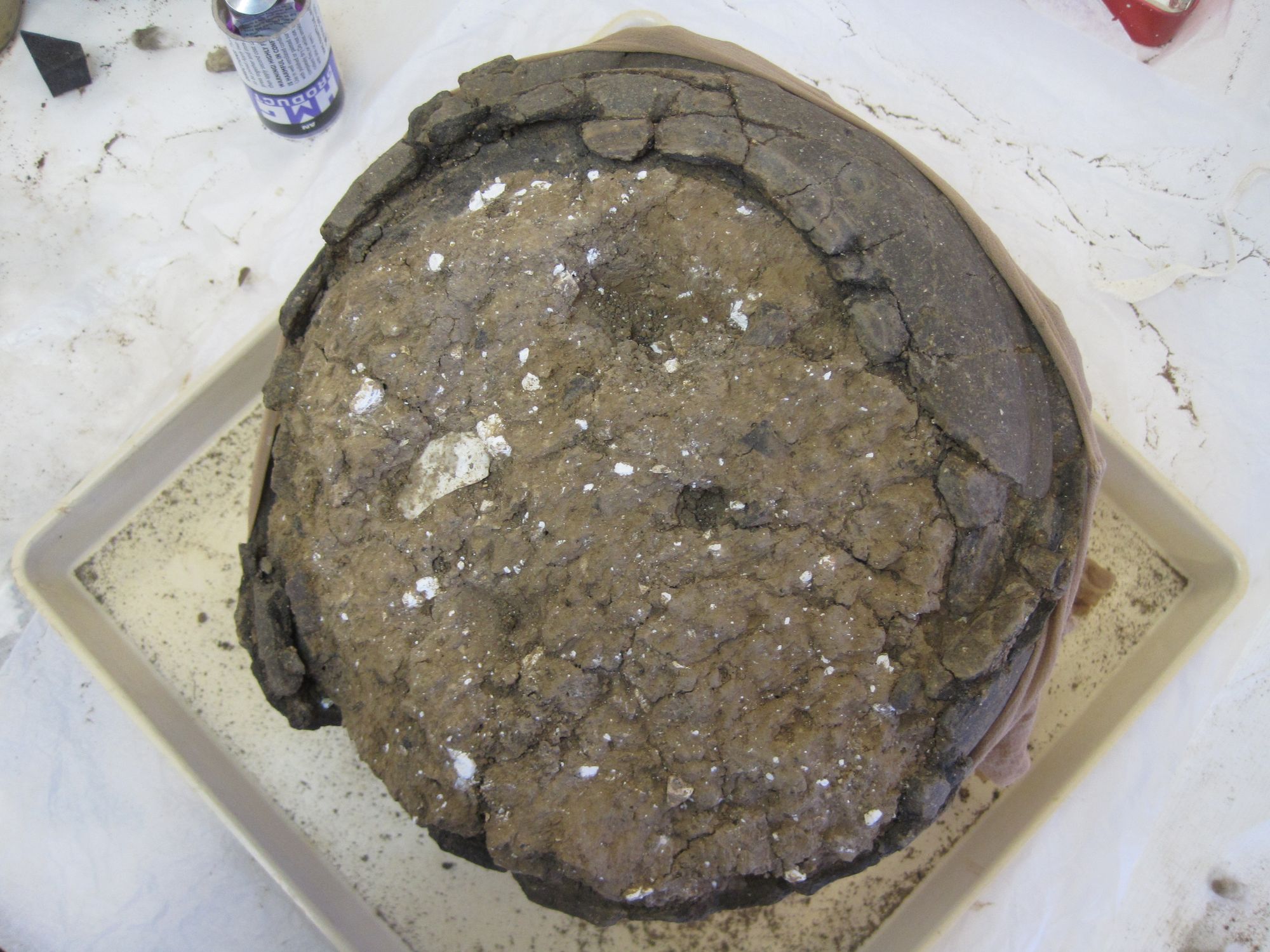
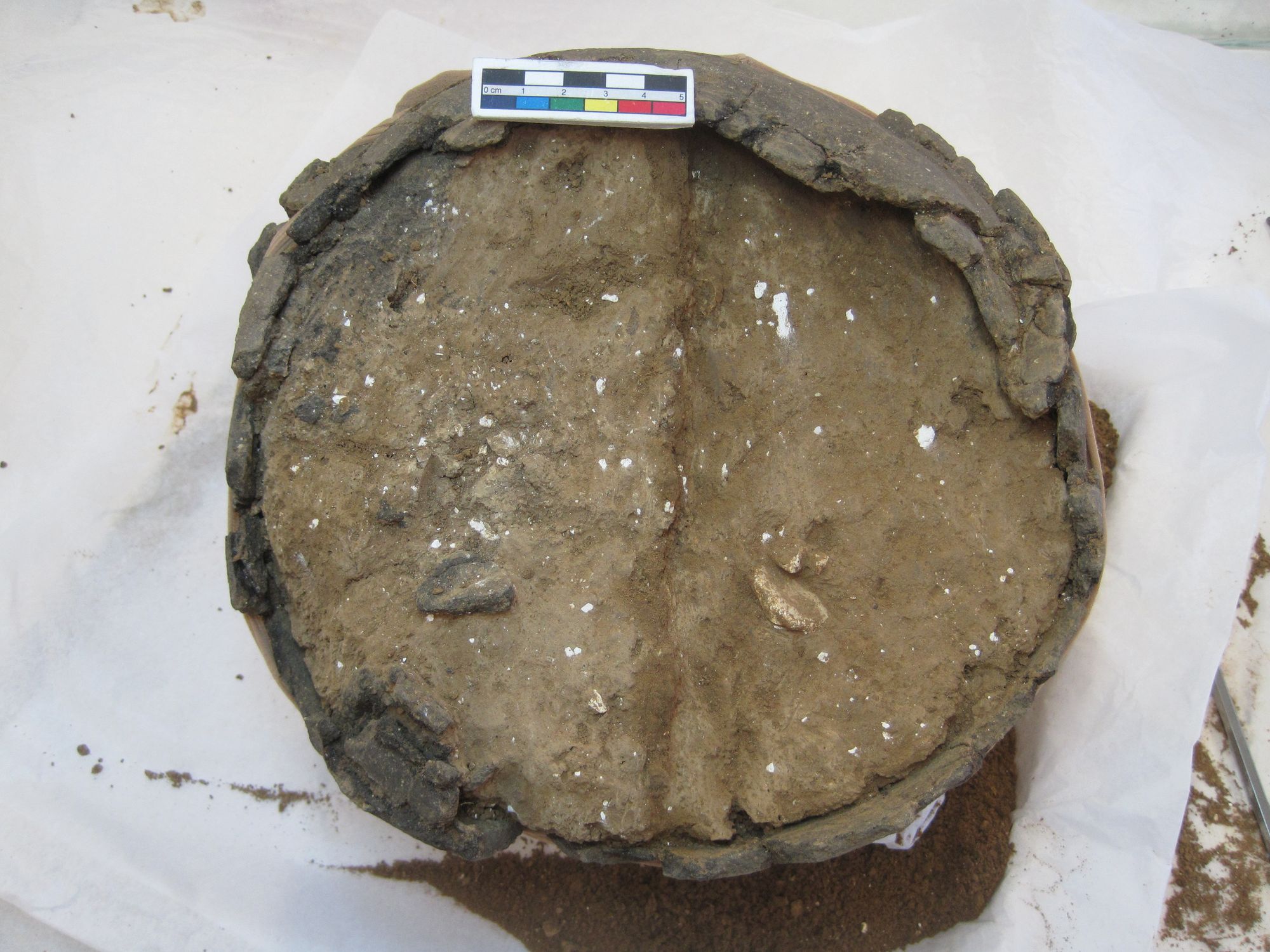

Excavation begins by carefully removing spits of around 15mm thick, softening the soil with deionised water before scraping it back, performing a half section each layer so that comparison with the previous spit is possible. Soil removed is bagged and retained, in case further analysis is required. Also bagged are a handful of tiny black seeds, and the obligatory tiny snail shells, but at this stage there is nothing to report apart from very hard soil, flints and the occasional root run.
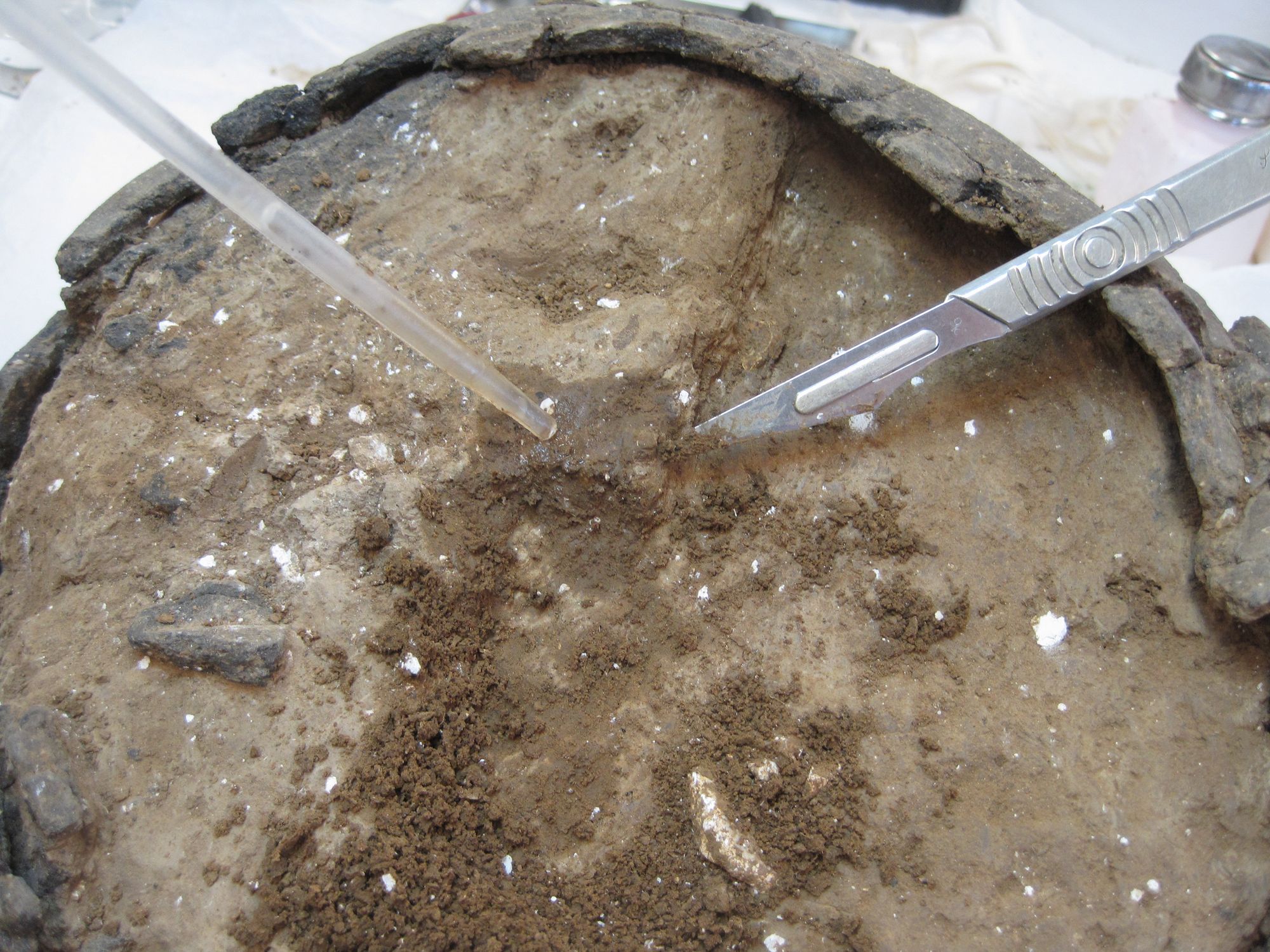
At around a third of the way down, there is sudden excitement in the form of a reddish stain in the soil. Taking great care, the soil around this stain is removed, revealing what looks like an iron staple – completely mineralised and very fragile, but in one piece, and even with what looks like minerally preserved wood on the underside!
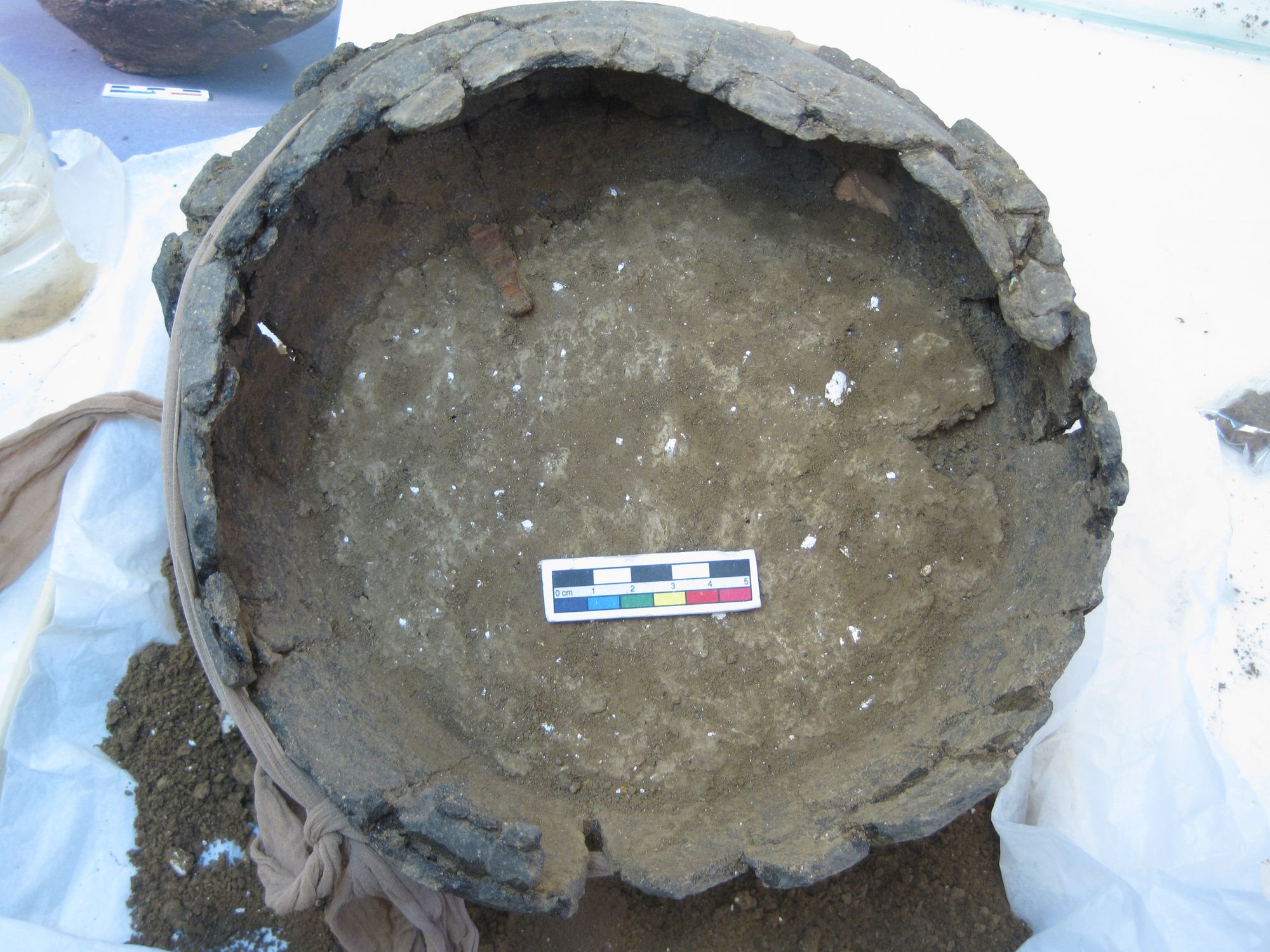

While X-Rays are incredibly useful, the information they capture can be limited. This is one of the reasons we never assume we are not going to find anything and micro-excavate very carefully. This little piece of evidence could so easily have been destroyed and lost.
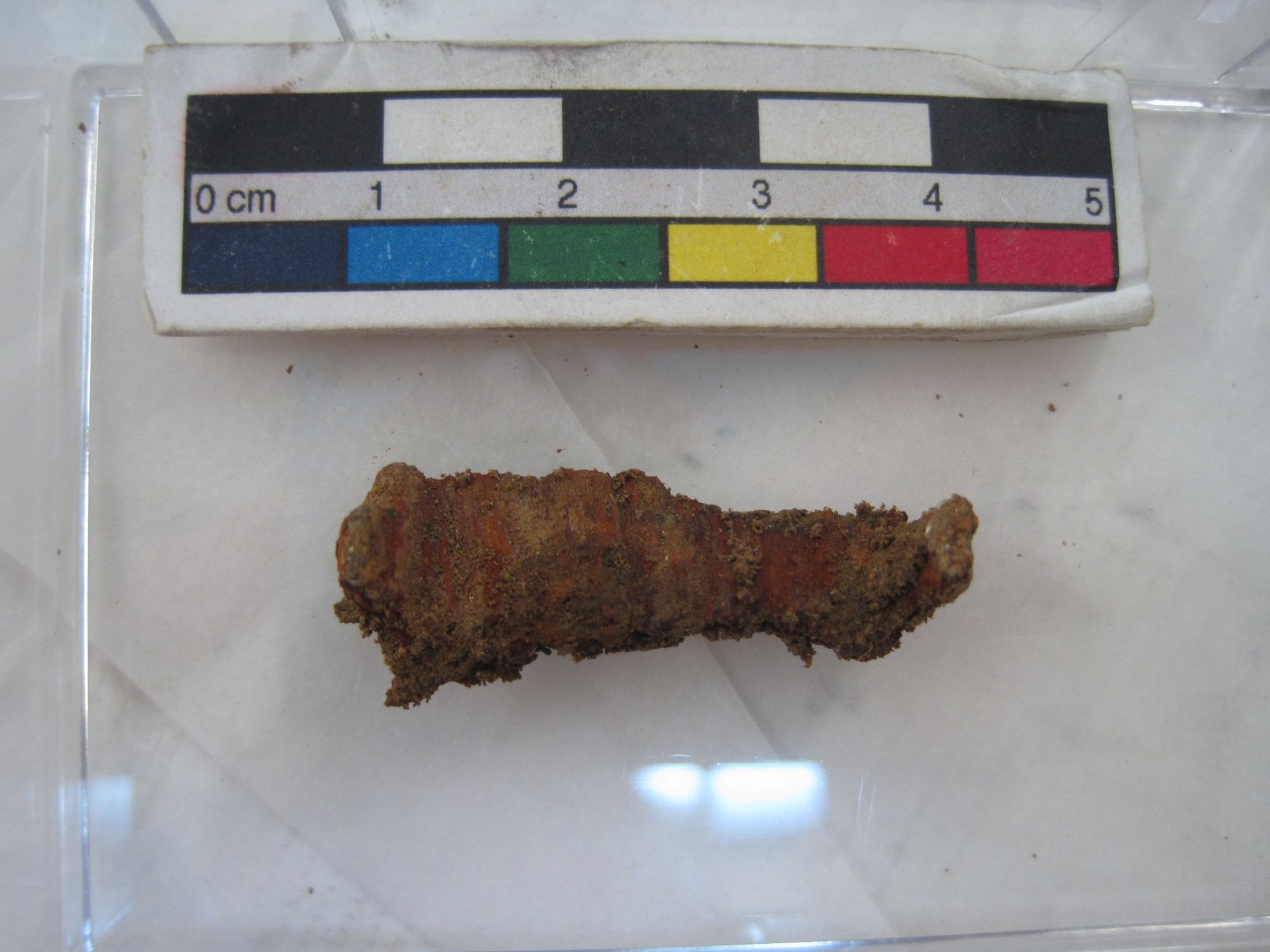
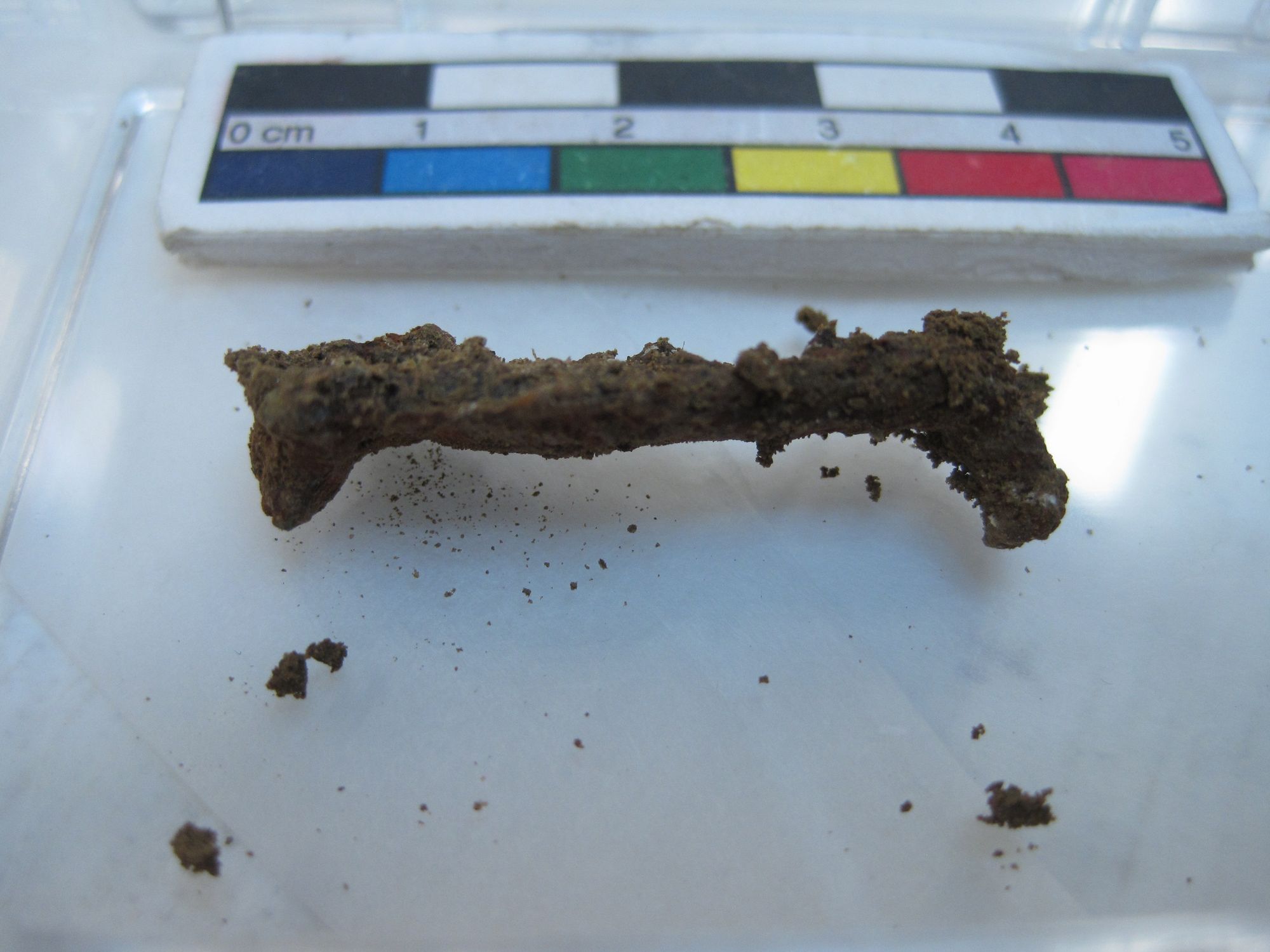
The final material to be emptied from the vessel is a mass of small natural flints, blocking a hole in the very base of the pot. The cracks and distortion to the vessel walls can be clearly seen. This pot may have reached the end of phase two, but there is still a long way to go before it is ready to be safely stored or displayed!
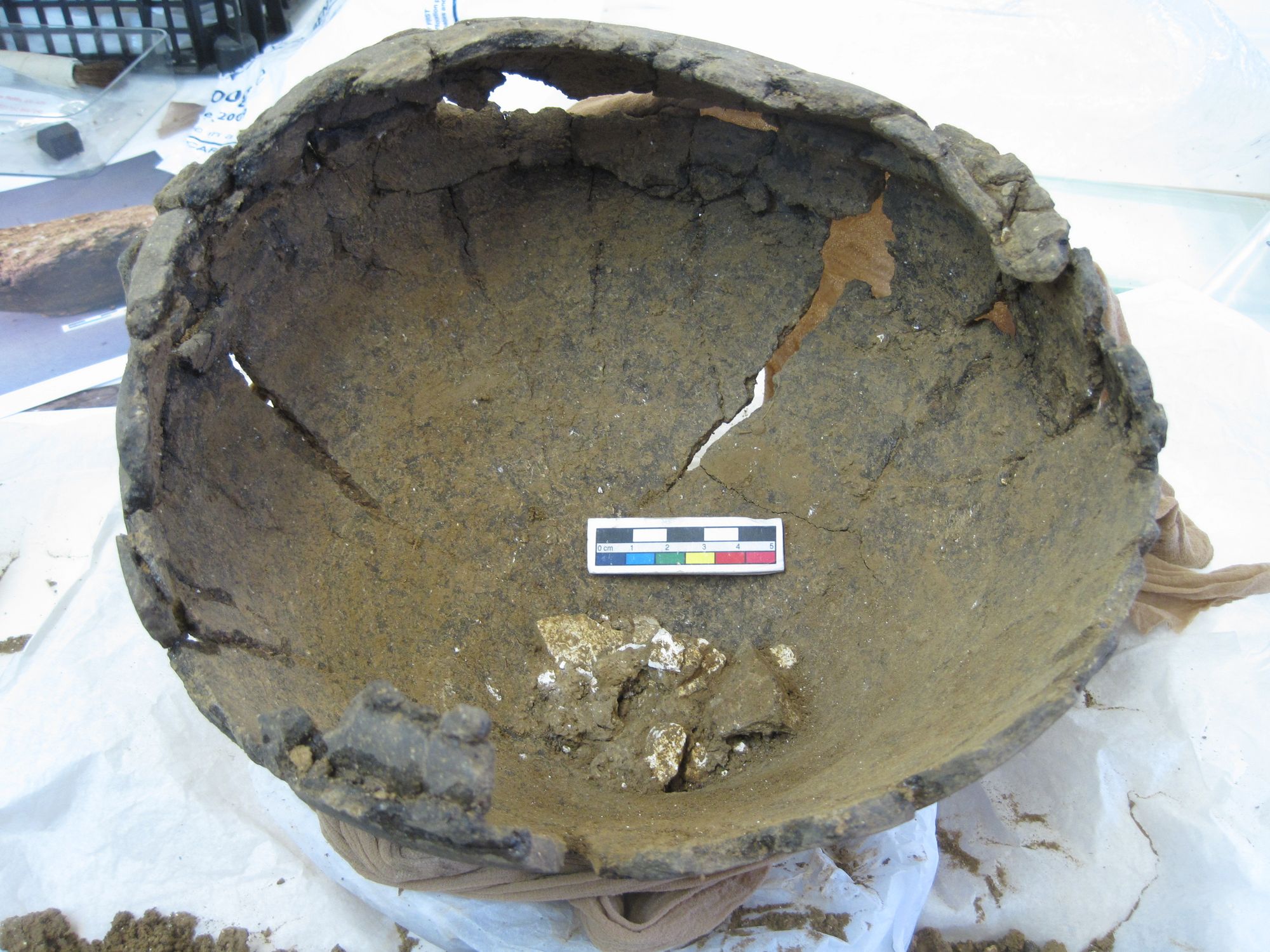
If you have enjoyed Culture on Call and you are able to make a donation, any support you can give will help us keep people connected.

